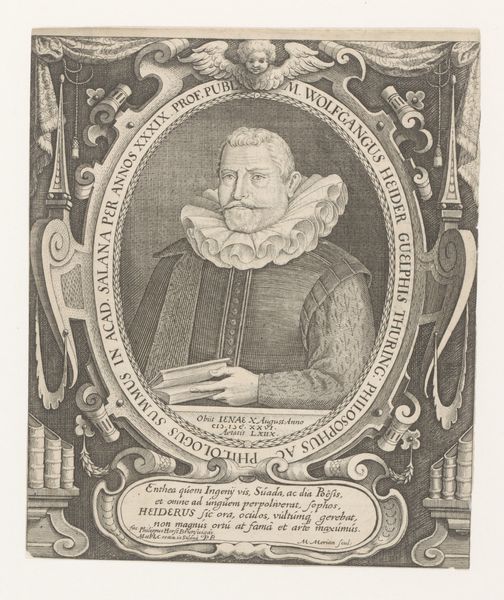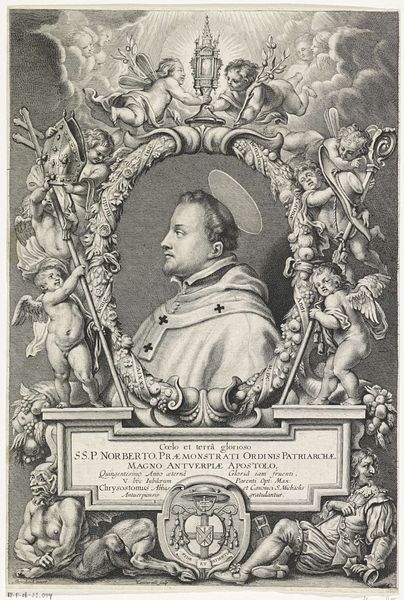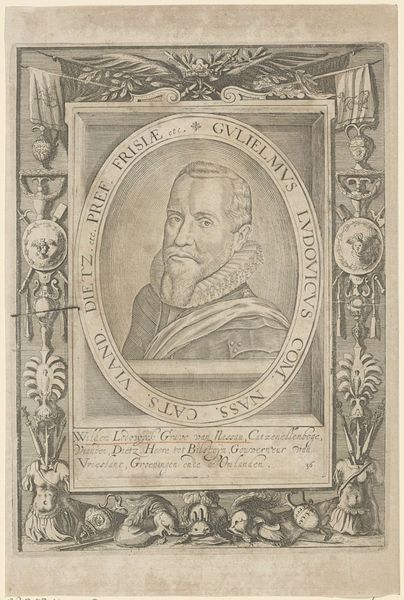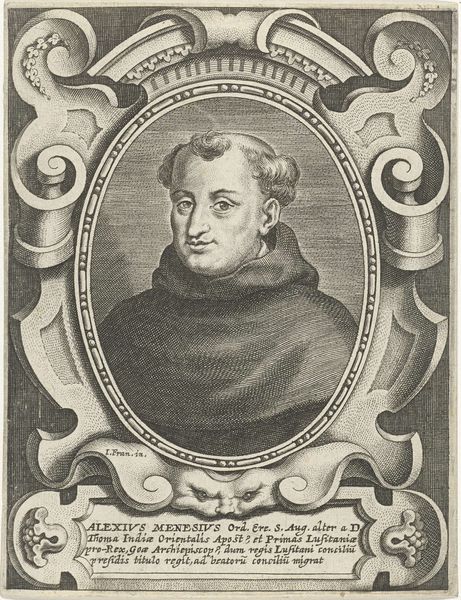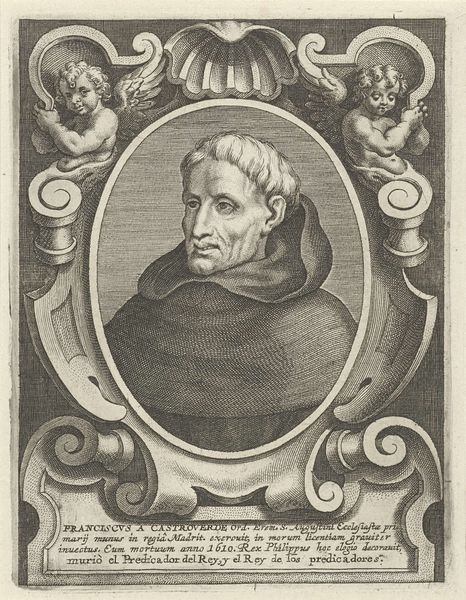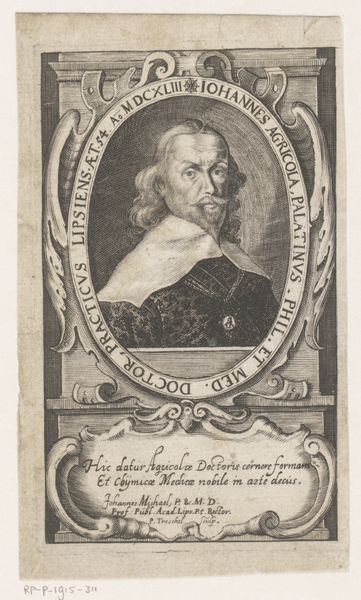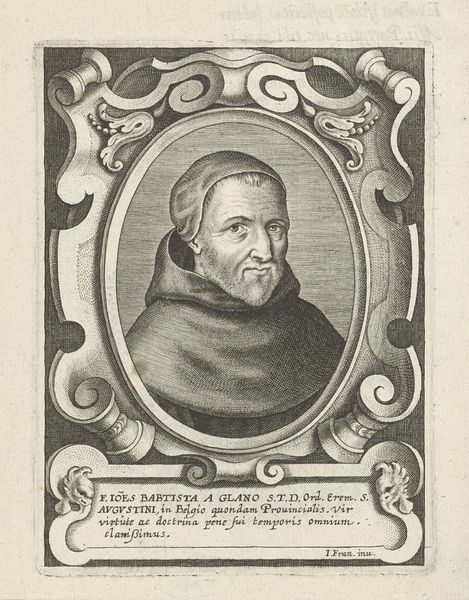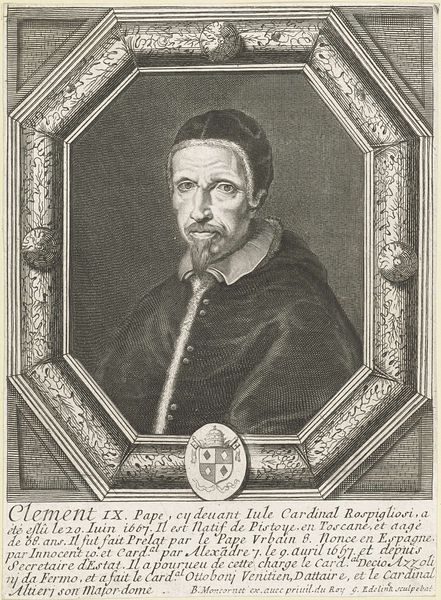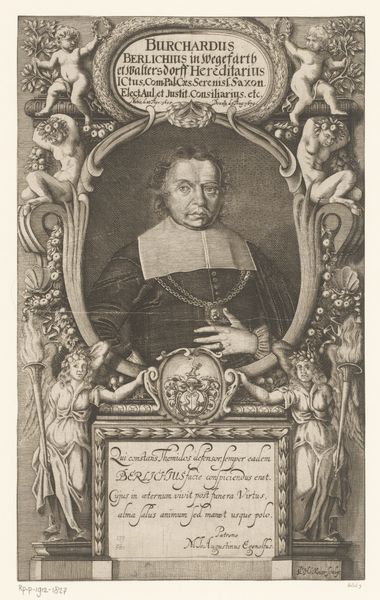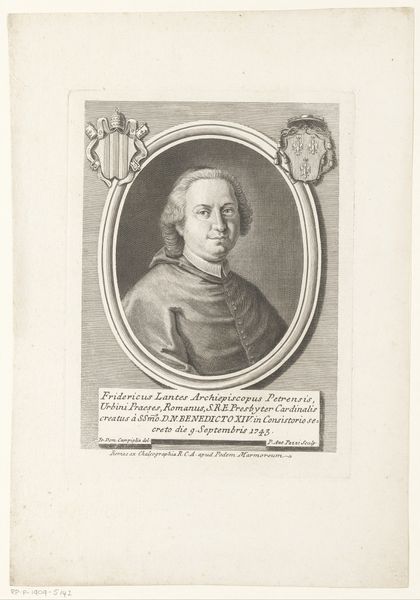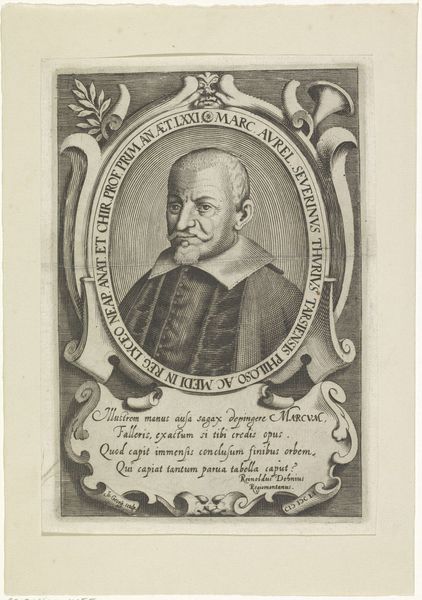
print, engraving
#
portrait
#
baroque
# print
#
old engraving style
#
pencil drawing
#
engraving
Dimensions: height 160 mm, width 121 mm
Copyright: Rijks Museum: Open Domain
Curator: Let's take a moment with this portrait print of Willem Elinck, created in 1639 by Pieter de Jode II. The original painting was done by Gonzales Coques, then rendered as an engraving. Editor: It feels remarkably formal, yet somehow inviting. The decorative frame around Elinck softens the gaze of a rather serious man. It's amazing how much character emerges from the engraving, such fine lines creating such depth. Curator: Right, engraving demands incredible skill, translating subtle tonal variations of a painting into a system of lines. We have to remember that printed portraits like this were essential for circulating images of important people, almost like early forms of social media. Editor: That makes total sense. Think of the labour involved, and how that adds to its artistic merit! There is something profoundly fascinating about how this particular type of skill manages to endure. One also ponders over Elinck himself – who was he? What thoughts passed behind those very eyes in 1639? Curator: Well, the inscription identifies him as ‘Guil: Elinck Secret: Curia de Beffere,’ which would make him Secretary of the Court of Belsele, then we can see he was about 49 years of age. The act of replicating the original painting via an engraving democratizes art and access to it to an extent, shifting the artwork's status into something new. Editor: The addition of that decorative frame is inspired too, complete with its own motto. Did prints often take on such a performative dimension? The portrait is not simply of Elinck; it also *performs* an elevated idea about Elinck. Curator: It’s quite common for prints to contain various forms of paratext like the motto here, which translated says ‘My salvation lies in envy of others, for he who oppresses will be oppressed’. Editor: Clever! So the frame serves not only to showcase his likeness but also to broadcast his philosophy, his aspirations. It’s a mini manifesto within an artwork! Thank you—I learned so much looking at the man and the print making this print unique. Curator: Indeed. Reflecting on the print's processes helps us look more closely at not only the material circumstances of its creation but also the ways it speaks to themes of power and public image.
Comments
No comments
Be the first to comment and join the conversation on the ultimate creative platform.
